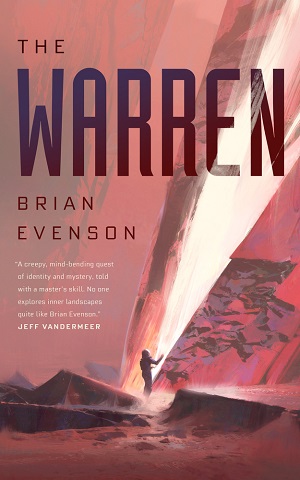 Meet Me Here At Dawn, by Sophie Klahr
Meet Me Here At Dawn, by Sophie Klahr
One of the things about poetry that will never cease to fascinate me is its potential to activate all of the senses. I am not referring to the imagination reconstruction metaphor and imagery in the mind’s eye. Prose can accomplish that just as well as poetry. Instead, I am speaking of poetry’s power to touch on and engender profound sensations, to create an experience of reading that is both immersive and penetrating. These interactions are unique to each reader, but they are only ever present in poetry of true quality, where each word or space has been chosen with meticulous care for its relationship to every other. Sophie Klahr’s Meet Me Here at Dawn is a collection of poems that accomplishes exactly that; it is a series of works that stand on their individual legs and which blend together into a beautiful mosaic that you can feel down into your toes.
When wading out into this collection, one of the first things you will likely notice is the use of space. Some poems are brief and to the point. Some poems meander like a river, filling the landscape of the page according to their own whims. Some are confessional and hesitantly eager. Others are grieving and dignified. The opening poem, “Prayer”, reads like a whisper into the aether, while “Departures” stops and starts, as if taking its time to consider each line and stanza before speaking, or as if letting each line or couplet echo and become part of a conversation. This is always open to interpretation, but I did not read the speakers of this collection as the same individual. Even within a singular poem like “Departures”, there is room for multiple speakers or, at the very least, a single speaker whose perspective evolves over the course of the poem. So when the collection starts with the whisper that is “Prayer”, it is as if a single voice releases the pressure of a dam, giving room for dozens of other voices to finally be heard. The effect was incredible, and made even more so as I read through it the second time, because as I read through I could hear the other voices beginning to rise like those in a harmonizing choir. Each sound empowered the others beside it without sacrificing its own strength, and the empty or negative space became a playground for reverberation.
there’s a girl, a bed, a gun, a fire
You want her to be a body of water a city you can disappear
The majority of that strength stems from the femininity of the experiences in the language. The collection presents an earnest, emotional, and visceral exploration of the nature of and circumstances surrounding the nebulous idea of womanhood. The tactile facet of this exploration is felt in almost every poem. Hypocritical stigmas and double standards are left to wither in the light. Repression and oppression are left to crack under their own insensible weight. Everything is given a level playing field and treated with curiosity. The sucking of a cock and the tonguing of an anus are regarded alongside sliced oranges and flowering fields. You can feel everything as you read. Klahr does not need to describe sexual release, or the sticky acidity of fruit, or the indescribable sensation of “punctured convention” and the air it releases. And this is not limited to the positive or neutral. The loss of a child, the loss of the ability to have children, and physical victimization are all incorporated as part of the potential of life, and they are not spared the same vivid immersion. Importantly, none of these experiences are treated as essential or central to the idea of being a woman, because that is not the point of the poetry. But they are laid out as part of the potential for a life, for a human experience.
What aperture makes a woman?
I bring the sea in. I do no research
whatsoever.
Keeping a collection like this on track in the face of its myriad voices and experiences is no small task, and it took me into the second read to realize how Klahr accomplished it. To be clear, they all felt unified, but I could not immediately discern why that was the case for my experience reading her work. Ultimately, the answer lay, as you might have suspected, in the title: dawn. Throughout the collection, the colors of the dawn splash onto the page and bleed into poem after poem. As referenced above, there is the orange of sliced fruit, but there is also the yellow of pollen draping an entire city, as well as post-coital blood staining bed sheets. There are fires in homes and on beaches, engulfing bodies and even light itself. Think of the palette of dawn, that reversed twilight, and all the things poetry has taught us to think of alongside it. The birth of a new day and the birth of a child. The awakening of minds and of the body as a sexual participant. The conflagration that consumes a beautiful or terrifying night. With a simple repetition of associated colors, Klahr invokes primal and yet spectrum spanning feelings that fill the mind with amber light, and she displays how that light can resurrect and incinerate.
A childhood of lush wasp-haunted pears and dust
the thin light caught on the long-dead rat in the basement.
As you can probably tell by now, I very much recommend picking this book up. It is a short read, barely hitting sixty pages, but any experience with poetry will tell you that this is no shortcoming. There is endless food for thought and re-readability, and in a time where we still have to have millions strong marches to ensure women are recognized as human beings, I find it hard to think of a better vehicle to convey perspective.
Meet Me Here At Dawn is available now through YesYes Books.

 Fish in Exile, Vi Khi Nao
Fish in Exile, Vi Khi Nao The Braid, by Lauren Levin
The Braid, by Lauren Levin The Warren, by Brian Evenson
The Warren, by Brian Evenson Baloney by Maxime Raymond Bock
Baloney by Maxime Raymond Bock Bottom’s Dream, by Arno Schmidt
Bottom’s Dream, by Arno Schmidt Flowers Among the Carrion: Essays on the Gothic in Contemporary Poetry, by James Pate
Flowers Among the Carrion: Essays on the Gothic in Contemporary Poetry, by James Pate You Ask Me To Talk About the Interior, by Carolina Ebeid
You Ask Me To Talk About the Interior, by Carolina Ebeid Suite for Barbara Loden, by Nathalie Lèger
Suite for Barbara Loden, by Nathalie Lèger Bruja, by Wendy Ortiz
Bruja, by Wendy Ortiz Storm Toward Morning, by Malachi Black
Storm Toward Morning, by Malachi Black My Damage: The Story of a Punk Rock Survivor
My Damage: The Story of a Punk Rock Survivor